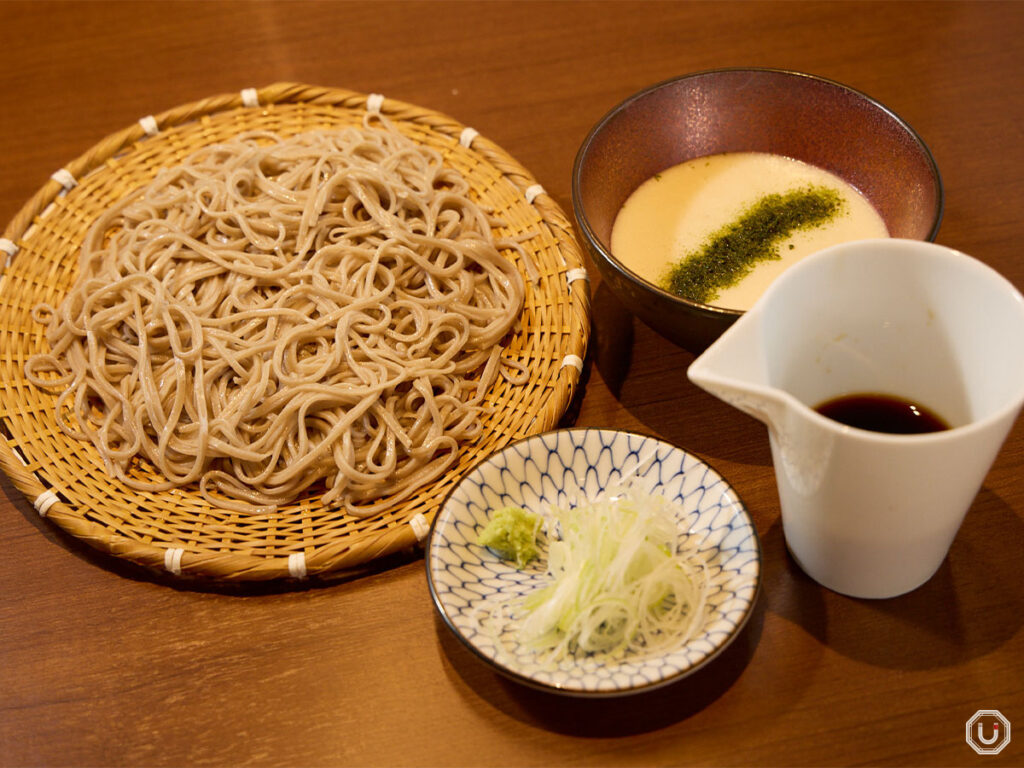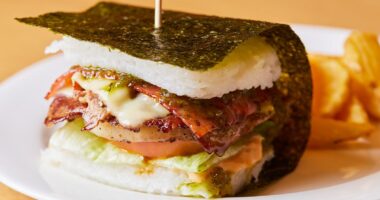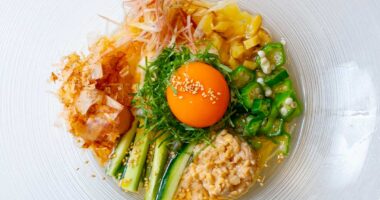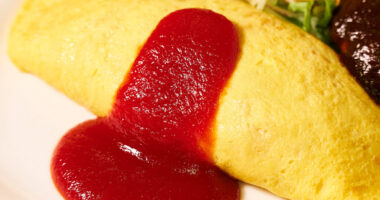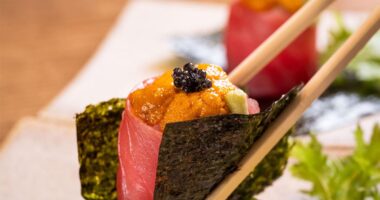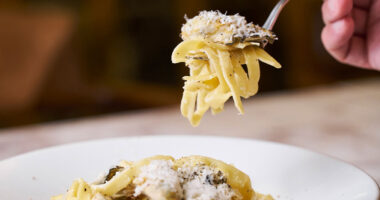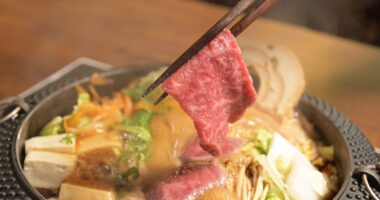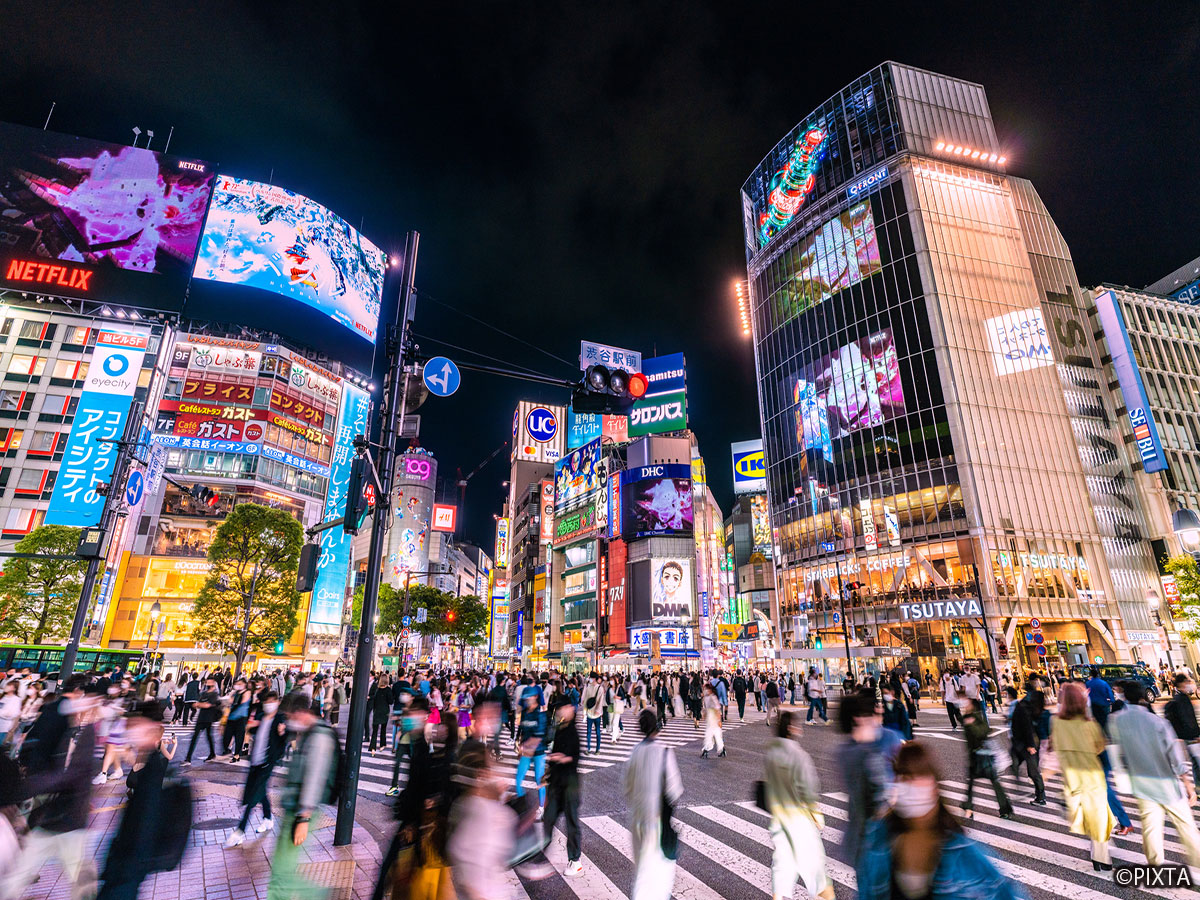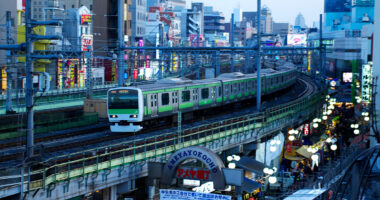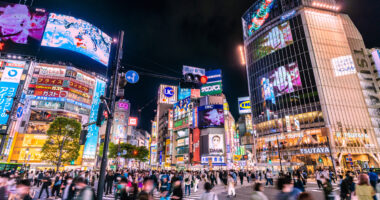Edomae soba (Edo-style soba), with a history stretching back some 400 years, is one of the representative culinary traditions of Japanese cuisine.
What sets Edo-style soba apart is its thin, sharp noodles. The dough consists of approximately 80% buckwheat flour and 20% wheat flour.
This ratio allows you to fully experience the flavor of soba while balancing a satisfying bite and smooth texture.
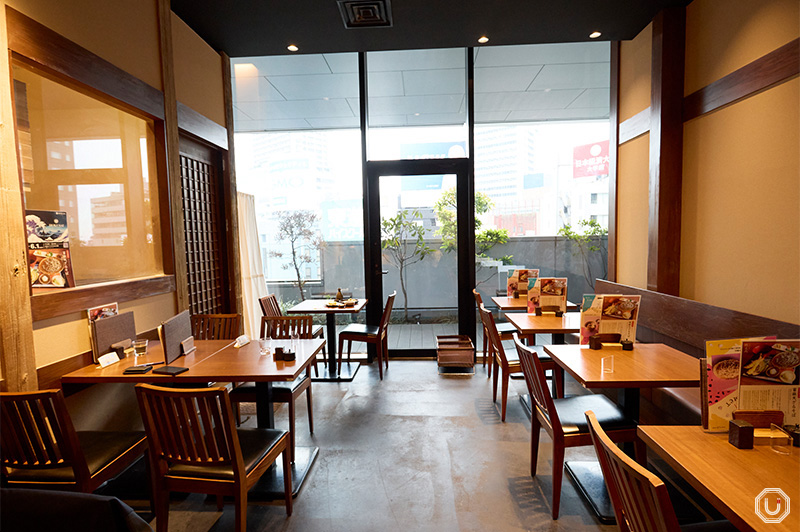
The dipping broth typically combines dashi extracted from bonito and kelp with dark soy sauce, creating a rich, umami-intense flavor.
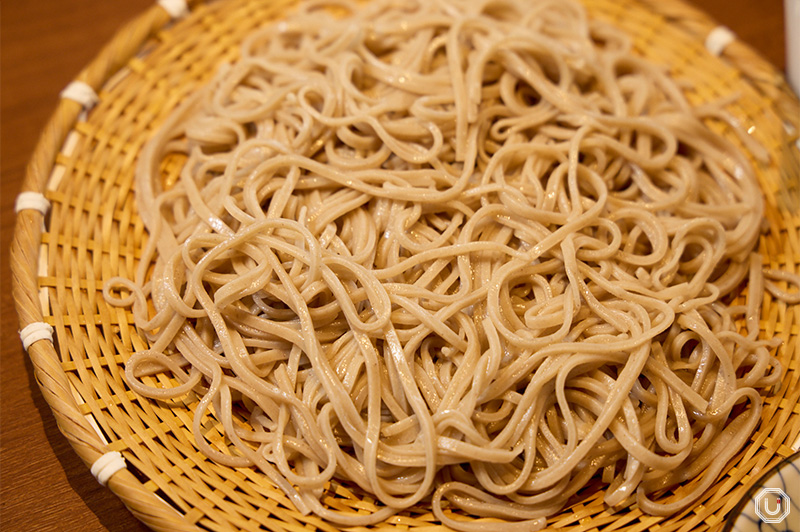
At “Teuchisoba-Takenouchi” you can savor authentic Edo-style soba in a modern, refined Japanese setting directly connected to Shibuya Station.
Every detail—from ingredients to preparation—is meticulously crafted. Inside this serene hideaway, far removed from the hustle and bustle of Shibuya, you can fully experience the true essence of Edo-style soba.
Watch soba being freshly made as you dine
The buckwheat used in the restaurant changes seasonally from regions around Japan like Hokkaidō and Fukui, selecting the highest quality available at each time.

Soba ingredients
The restaurant’s commitment is to carefully grind buckwheat daily using in-house stone mills, a process that brings out the aroma and umami of soba.
Furthermore, Teuchisoba-Takenouchi employs a method called hikigurumi where the buckwheat husk is ground together with the grain, pursuing not only rich flavor but also a pleasing texture.
Using this method, the soba’s natural fragrance and flavor are further elevated, creating a deeply satisfying taste.
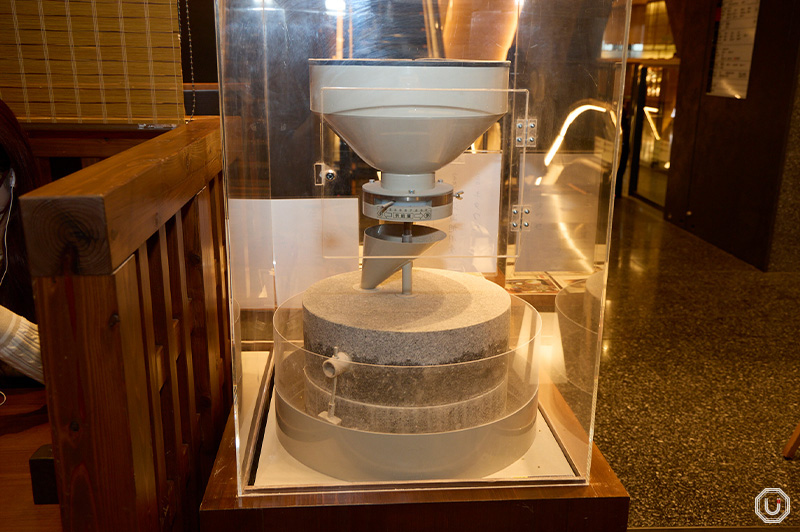
You can watch the subsequent process of soba being handmade up close by skilled chefs within the restaurant.
The process starts with neri, a kneading stage where buckwheat and wheat flour are combined with water and formed into a conical shape.
Next, using a long rolling pin, the dough is stretched into a square shape with uniform thickness.
During this process, stretching without letting it dry allows moisture to seep inside, resulting in a smooth final product.
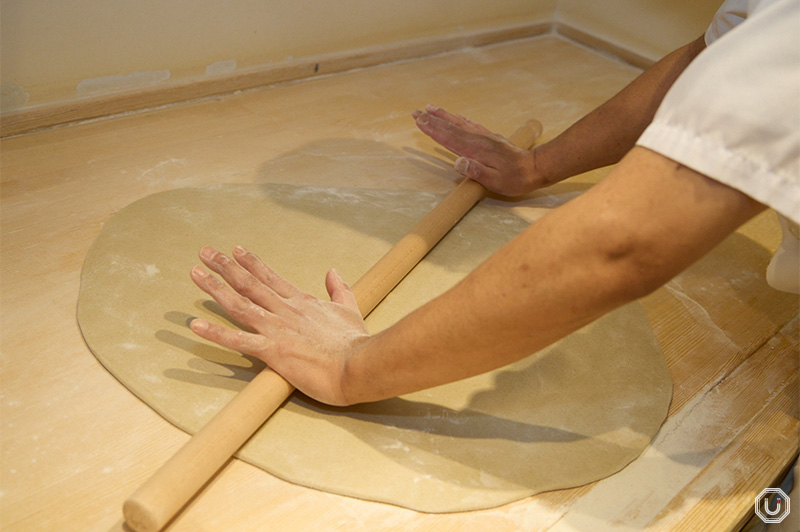
Once the dough is uniformly thin, it’s sliced into fine, even noodles with a special soba knife. The cut noodles are then rested for about an hour to allow the moisture to fully permeate them.
Crafting truly delicious soba requires the ability to judge temperature, humidity, and the condition of the ingredients. Mastering the art of perfecting the right water ratio and kneading pressure takes years of training.
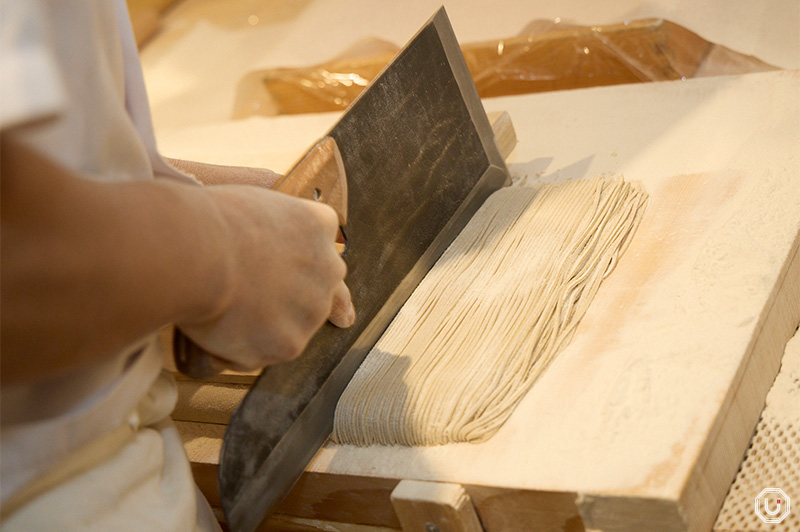
“Yamaimo Tororo Soba”: a trinity of aroma, sweetness, and umami
Teuchisoba-Takenouchi boils soba in a large 40-liter (10.5-gallon) pot, rinses it thoroughly twice in cold water, and serves it fresh.
You can best appreciate the flavor and aroma crafted from this when you eat cold soba. Among these, the “Soba noodles with cold dipping broth and grated mountain yam” (“Yamaimo Tororo Soba” in Japanese) is especially recommended.
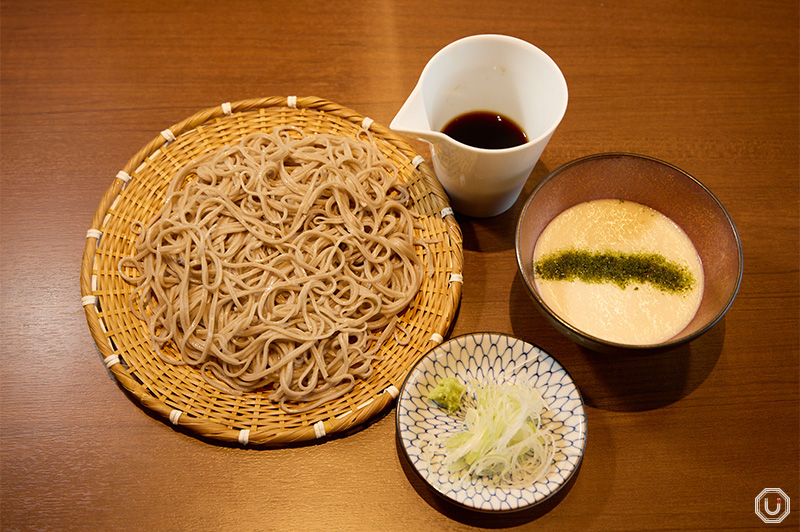
“大和芋のとろろそば,” Soba noodles with cold dipping broth and grated mountain yam 1,430 JPY (tax included)
Yamaimo is a variety of Japanese mountain yam that turns wonderfully gooey when grated.
When eating, first pour the accompanying broth into the bowl containing the grated yam. Check the taste after pouring about one-third to half of the broth, and adjust to your preferred concentration.
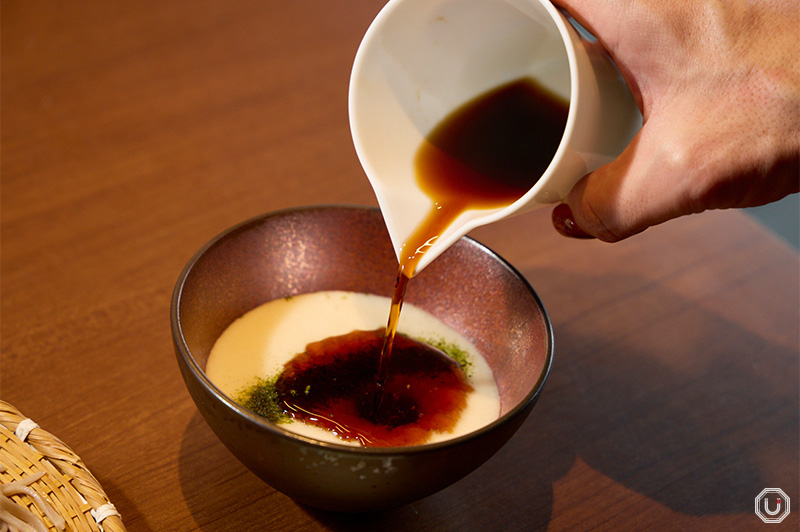
Then dip half the noodles into the yam-infused sauce and enjoy!
The cold soba broth at Teuchisoba-Takenouchi features a robust flavor made from soy sauce, sugar, Rausu kombu (kelp), and katsuobushi (bonito flakes).
By slurping the noodles at once and giving them a bite, you can experience the soba’s natural flavor, the broth’s umami, and gentle sweetness of the yamaimo harmonizing together.
The perfect amount of chewiness, a pleasant crispness, and a silky glide make this dish addictively good.
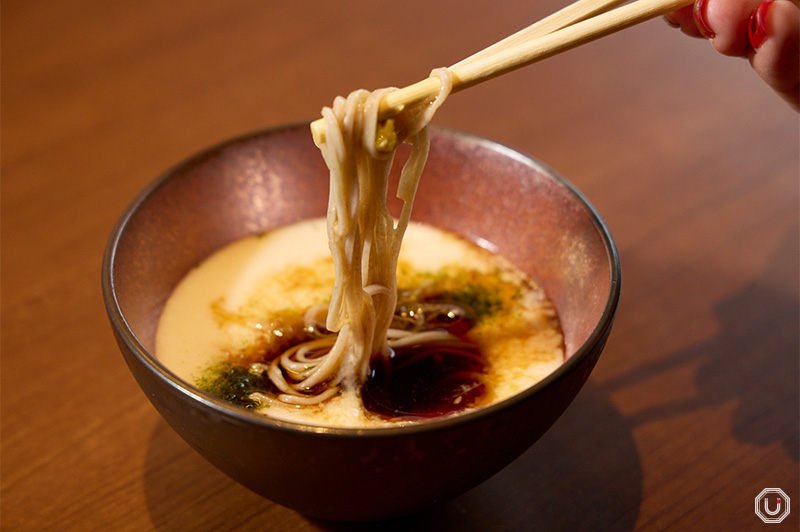
Chopped green onions and wasabi are served on the side. Add them to the broth according to taste. Placing a dab of wasabi on top of the noodles is another recommended way to eat it.
In Edo-style soba culture, it’s encouraged to slurp soba vigorously, so feel free to slurp your noodles with gusto!
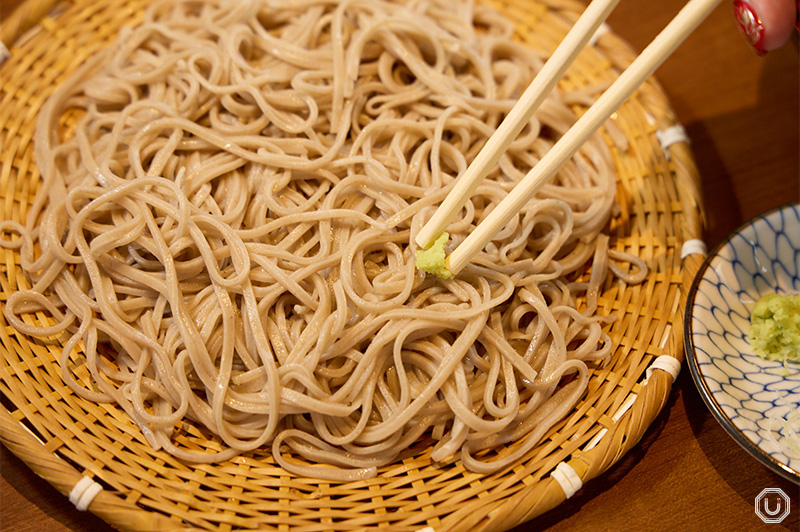
It’s recommended to finish the soba while it’s still fresh.
After finishing the noodles, add soba-yu (soba cooking water) to the remaining broth and drink it.
Drinking the remaining broth blended with soba-yu after eating cold soba is a Japanese culinary custom. The rich broth harmonizes and mellows when mixed with the soba water, making it delicious to drink.
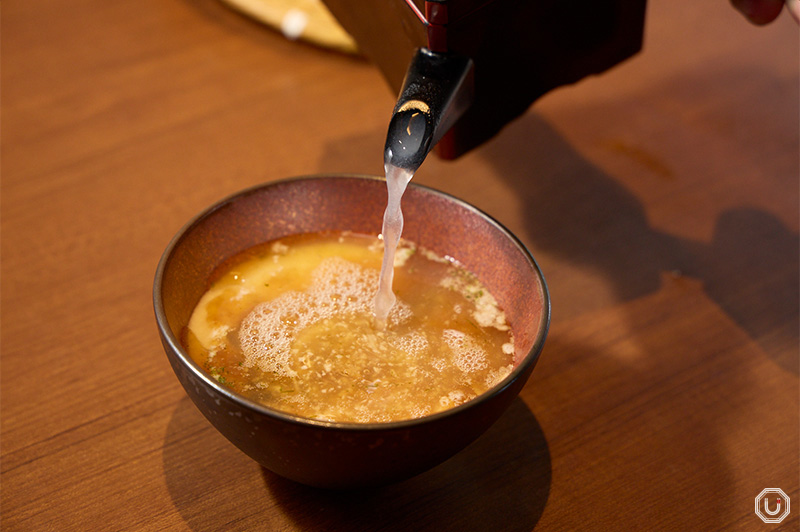
Soba-yu
The deeply flavored “Kamo Nanban Soba”
The signature hot soba at Teuchisoba-Takenouchi is the “Soba noodles in hot broth with duck meat” (“Kamo Nanban Soba” in Japanese) featuring slices of duck and green onions.
In Japan, dishes with green onions often have “nanban” in their name.
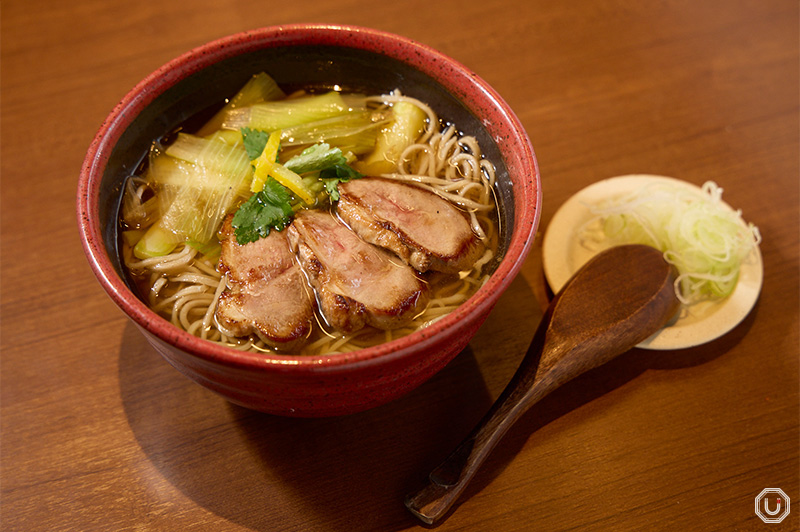
“鴨南蛮そば,” Soba noodles in hot broth with duck meat 2,200 JPY (tax included)
The broths for hot and cold soba differ. The hot soba broth is made from a dashi of kombu, bonito, and mackerel, seasoned with light soy sauce for a delicate flavor.
With just one bite of the grilled duck, its umami flavor bursts forth, enhanced by the sweetness of the tender green onions and a subtle hint of yuzu citrus aroma.
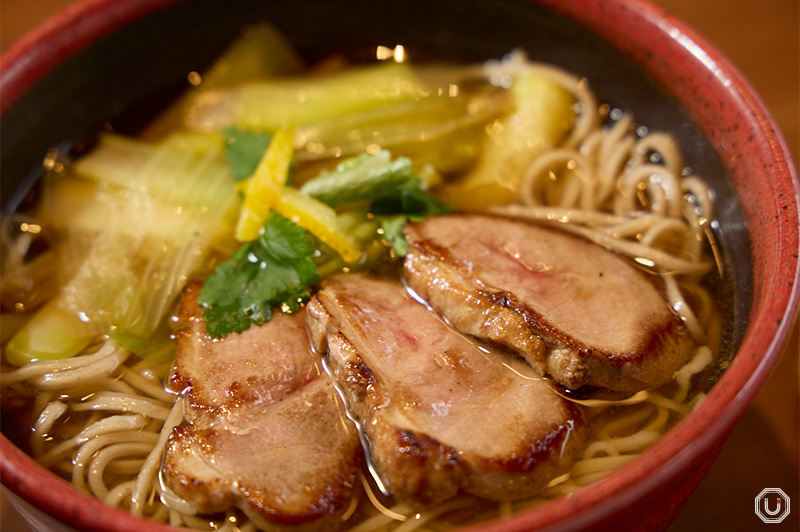
“Tamagotoji Soba”: umami gently wrapped in fluffy eggs
Another must-try is the “Soba noodles in hot broth with egg” (“Tamagotoji Soba” in Japanese), topped with a bed of fluffy eggs cooked to perfection.
It has a gentle sweetness that will comfort your soul as well as your taste buds.
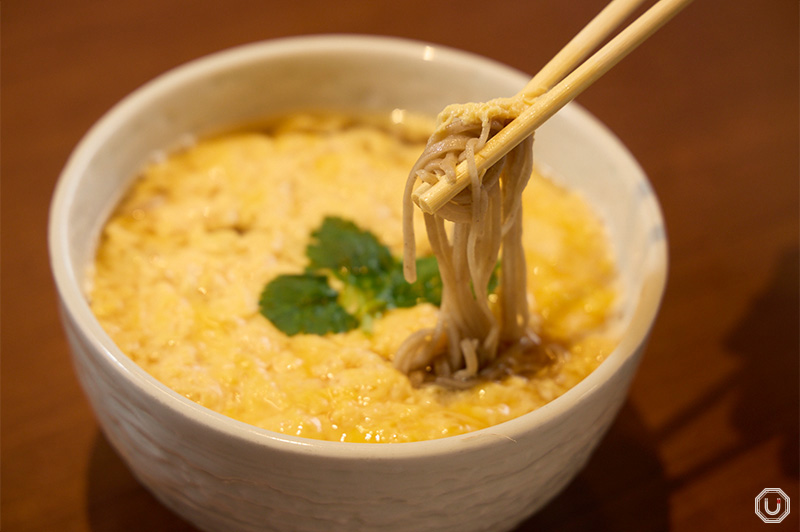
“玉子とじそば,” Soba noodles in hot broth with egg 1,320 JPY (tax included)
This dish also comes recommended when you’re hungover or when your stomach needs a break.
Additionally, the restaurant has seasonally limited soba dishes, such as spring offerings with sakura shrimp and spring vegetables, so don’t miss a chance to try them.
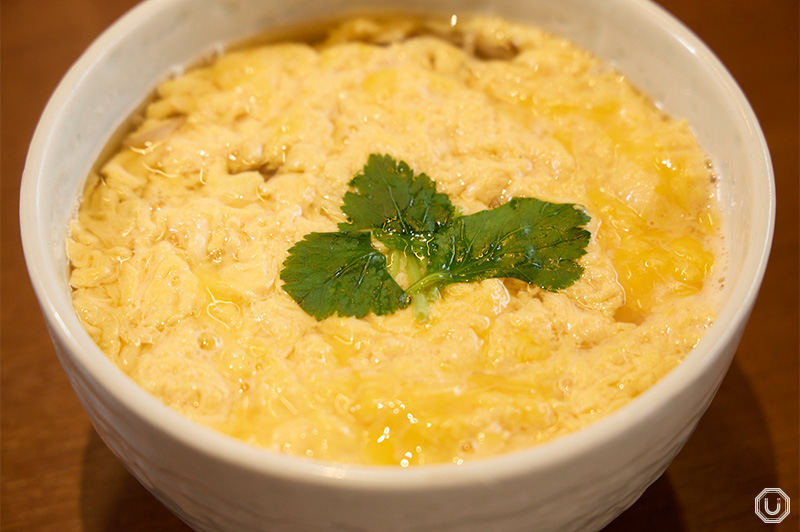
Enjoy refined food culture with soba appetizers and drinks
You can fully enjoy just the soba at Teuchisoba-Takenouchi, but since you’re already visiting an authentic Edo-style soba restaurant, it’s highly recommended to take the chance to enjoy soba-mae.
Soba-mae refers to the tradition of enjoying small bites and sake before eating soba—literally meaning “before soba” in Japanese.
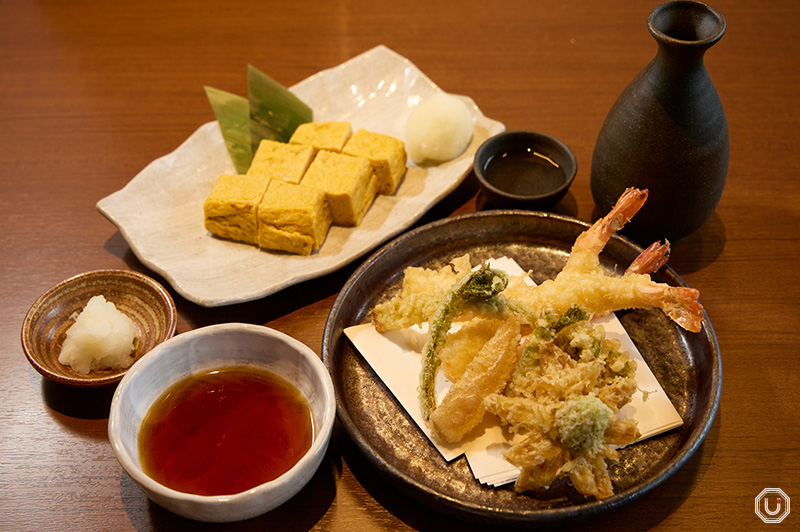
(front) “海老と野菜の天ぷら盛り合わせ,” Assorted Shrimp and Vegetable Tempura 2,640 JPY (tax included), (back)”だし巻き玉子,” Rolled Omelet Seasoned with Dashi 880 JPY (tax included)
Classic soba-mae bites include a wide variety of dishes like tamagoyaki (Japanese rolled omelet), itawasa (slices of kamaboko fish cake served with wasabi), tempura, and soba miso (a savory paste made by mixing soba grains with miso and lightly searing it).
Enjoy these at your own pace with Japanese sake, and when you’ve satisfied your hunger just enough, order your soba.
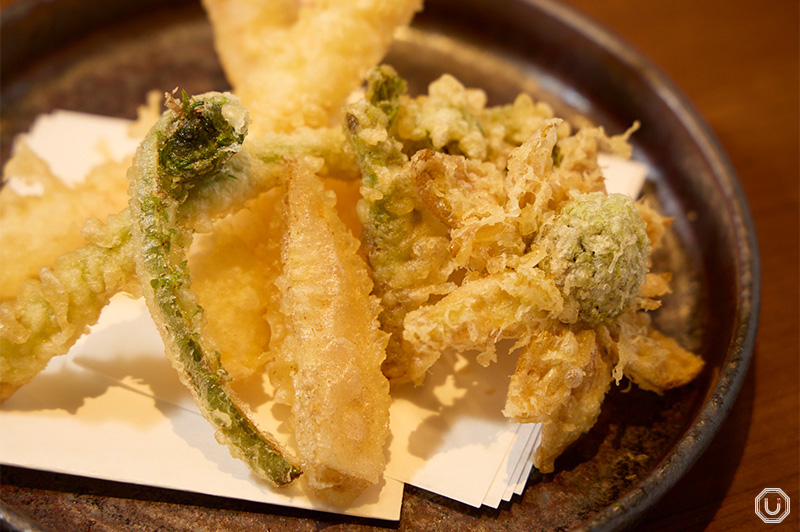
“海老と野菜の天ぷら盛り合わせ,” Assorted Shrimp and Vegetable Tempura 2,640 JPY (tax included)
Finishing your meal with soba is truly the hallmark of the Edo-style soba experience.
Located in Shibuya, where people from all over the world gather, Teuchisoba-Takenouchi offers an English menu and a warm welcome for international guests. It’s a space where anyone can feel at home.
At Teuchisoba-Takenouchi, you’ll also find a wide selection of small bites and Japanese sake—be sure to indulge and enjoy the full experience.
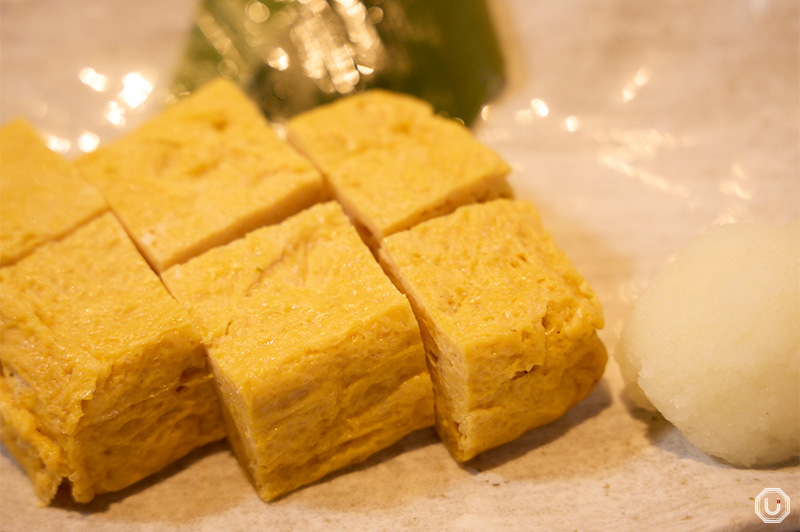
“だし巻き玉子,” Rolled Omelet Seasoned with Dashi 880 JPY (tax included)
Information
| Store name | 手打ちそば 竹之内 Teuchisoba-Takenouchi |
|---|---|
| Address | Fuclas Shibuya 6F, 1-2-3 Dogenzaka, Shibuya-ku, Tokyo
|
| Access | Shibuya Station(SBY) 2-minute walk from Shibuya Station West Exit
Shibuya Station(SBY) 4-minute walk from Shibuya Station West Exit
|
| Phone number | 03-5422-3040 |
| Reservations | Not accepted |
| Payment |
|
| Service charge/Table charge | None |
| Hours | 11:00-22:00(last order 21:00) lunchtime 11:00-17:00, dinnertime 17:00-22:00 |
| Closed | No holidays excluding Tokyu Plaza Shibuya official holidays |
| Seating | 32 table seats |
| Smoking | All seats are non-smoking |
| Official website | https://synergyinc.jp/brands/#brand_4 |
| Other information |
|
※Menu contents, prices, store information, etc. are current as of April 2025.
